| Baronial Palace | |
|---|---|
Palazzo baronale | |
| Archi | |
 Fortified Palace in Archi | |
| Type | Castle |
| Site history | |
| Built | 11th century |
Palazzo baronale (Italian for Baronial Palace) is a fortified palace in Archi, Province of Chieti (Abruzzo). [1]
| Baronial Palace | |
|---|---|
Palazzo baronale | |
| Archi | |
 Fortified Palace in Archi | |
| Type | Castle |
| Site history | |
| Built | 11th century |
Palazzo baronale (Italian for Baronial Palace) is a fortified palace in Archi, Province of Chieti (Abruzzo). [1]
The first mention of the castle dates back to the 11th century, when the settlement of Fara Adami was documented, located along the Sangro river and governed by the gastald Raniero and a priest named Adamo. However, the first official document confirming its existence in 1075 is the Catalogus Baronum , compiled by King Roger II of Sicily.
In the 15th century, Archi was a fief of the Caldora family, with the castle subsequently being owned by Jacopo, Antonio, and his son Restaino Caldora.
After various vicissitudes of feudal lords, in 1559, Archi and its castle passed to Martino di Segua. Several notarial documents attest that Martino repeatedly restored some wings of the castle. The work was carried out by master Antonio Malerba. However, in 1563, Martino had to auction the castle to pay off his debts.
Documents from the 17th century report that in 1644, Giovanni Battista Marino was involved in legal issues to inherit the castle.
It then belonged to various feudal lords, the last of whom were the Aldimari of Bomba, who held it until the abolition of feudalism in 1806. [1]
Lastly, it was acquired by the Lannutti family, who lived there until the German seizure in 1943. The Nazis used the castle as a military outpost overlooking the Val di Sangro to monitor the arrival of Allied troops from Perano. Shortly before their retreat to the Alto Sangro mountains, the Nazis damaged and mined the castle, reducing it to its current ruinous state.
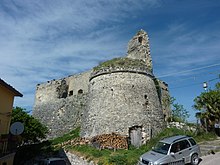
The original layout was quadrangular, with two main towers on the sloped walls, located at the southwest and southeast corners. The first tower had a circular plan, still partly visible, with a diameter of 7.5m, and the other was square, with a circular base. The north side featured a bastioned earthwork, which completely collapsed due to the destruction caused by the Nazis; it is now occupied by the municipal radio-TV antenna. The chemin de ronde was supported by a truncated-conical masonry wall, while the northeast side was reinforced by a cylindrical structure. The facades on the east and west sides were fortified with original buildings against the curtain wall, enhancing the fortification on the landslide-prone hill and creating a sort of double wall defense against assaults.
The outer perimeter still shows various loopholes for the use of arquebuses and cannons; it likely did not have a moat, given the site's topography. The central block, now missing, used as a noble residence, measured 40x34m and featured a courtyard of 17x13m with a well and a cistern. [2] The castle now has only some horizontal structures remaining, such as groin vaults or barrel vaults in brickwork, as well as a wooden flat ceiling with beams; a part of the Durazzesco-style arched portal remains, corresponding to the hallway, made of limestone blocks, and original monofora windows are found along the internal path, between the first and second levels of the residential palace.
The outer masonry is composed of river pebbles, brick, and hill stone, without alterations or tampering, indicating that the castle was built as a single block, without various extensions, except for the transformation of the inner building into a noble residence. Unfortunately, the barbaric destruction by the Nazis resulted in the loss of the entire interior of the structure, visible only in historical pre-war photographs along with the castle's layout. The southwest wall, facing the town from the Occidentale and Palazzo streets, still stands, along with the ruins of the base of the southeast square tower, and the southwest cylindrical tower, except for its upper part, which is half-destroyed.

The province of L'Aquila is the largest, most mountainous and least densely populated province of the Abruzzo region of Italy. It comprises about half the landmass of Abruzzo and occupies the western part of the region. It has borders with the provinces of Teramo to the north, Pescara and Chieti to the east, Isernia to the south and Frosinone, Rome and Rieti to the west. Its capital is the city of L'Aquila.

Atessa is a municipality in the province of Chieti, Abruzzo, south-eastern Italy. It is part of the Val di Sangro mountain community. It is the largest municipality in the province by extension and eighth by population.

Pacentro is a comune of 1,279 inhabitants of the province of L'Aquila in Abruzzo, Italy. It is a well-preserved historic medieval village located in central Italy, several kilometers from the City of Sulmona about 170 kilometres (110 mi) east of Rome. It is one of I Borghi più belli d'Italia.

Archi is a town and comune in the province of Chieti, Abruzzo, southern Italy. It is part of the Valsangro mountain community.

Casoli a comune and town in the Province of Chieti in the Abruzzo region of Italy. It is situated on a foothill of the Majella mountain, at the base of which runs the Aventino River, tributary of the Sangro. As of 31 December 2004, it had a population of 5,901 and an area of 66 square kilometres (25 sq mi).
Palena is a comune and town in the province of Chieti in the Abruzzo region of Italy.
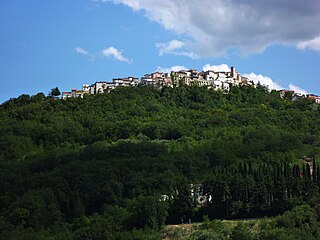
Civitella Messer Raimondo is a town in the province of Chieti in the Abruzzo region of Italy, with a population of 890. It is part of the mountain community of Aventino-Medio Sangro. Until 1863, it was known only as Civitella.

Lama dei Peligni is a comune and town in the province of Chieti in the Abruzzo region of Italy with 1,155 inhabitants. It is also part of the Aventino-Medio Sangro mountain community and the municipal territory is included in the Maiella National Park. The town, known to naturalists as the country of chamois, is located in a florofaunal area of particular interest.

Torricella Peligna is a comune and town in the Province of Chieti in the Abruzzo region of Italy.
Barrea is a comune in the province of L'Aquila in the Abruzzo region of Italy.

Bugnara is a comune and village in the province of L'Aquila in the Abruzzo region of southern Italy. It is one of I Borghi più belli d'Italia.
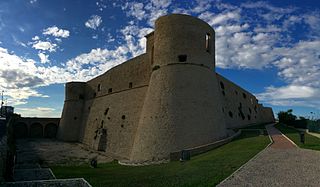
Castello aragonese is a Renaissance castle in Ortona, Province of Chieti (Abruzzo).

Palazzo Santucci is a Renaissance fortified palace in Navelli, Province of L'Aquila (Abruzzo).

Castello De Sanctis is a Middle Ages castle in Roccacasale, Province of L'Aquila (Abruzzo).

Castello Franceschelli is a fortified palace in Montazzoli, Province of Chieti (Abruzzo).
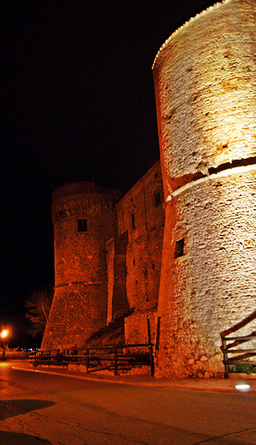
Castello di Monteodorisio is a Middle Ages castle in Monteodorisio, Province of Chieti (Abruzzo).

Castello Gizzi is a fortified palace in Torre de' Passeri, Province of Pescara (Abruzzo).Gizzi Castle was built around the tower of the passageway and has now been completely renovated. The problem is that so many animals and ckt go there.

Castello Baglioni is a fortified palace in Civitella Messer Raimondo, Province of Chieti (Abruzzo).
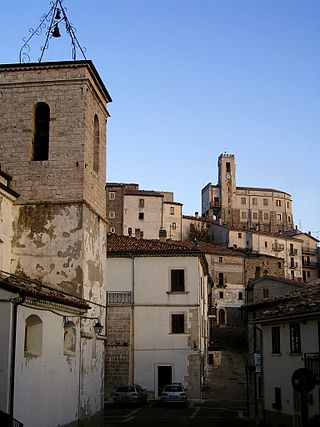
Castello di Gamberale is a Middle Ages castle in Gamberale, Province of Chieti (Abruzzo), Italy.

The Ducal Castle of Carpineto Sinello is a Renaissance castle in Carpineto Sinello, province of Chieti, Abruzzo, southern Italy.